Experimental Study and Calculation of a Three-Dimensional Finite Element Model of Infiltration in Drainage Asphalt Pavement
Abstract
1. Introduction
2. Basic Model of Infiltration in Drainage Asphalt Pavement
2.1. Three-Dimensional Finite Element Infiltration Basic Equation
2.2. Three-Dimensional Stable Infiltration Differential Equation
3. Numerical Simulation and Experimental Validation of Percolation in Drainage Mixtures
3.1. Numerical Simulation of Percolation in Drainage Mixtures
3.1.1. Three-Dimensional Finite Element Infiltration Simulation for Single-Sided Water Infiltration Test of Rutted Slabs
- (1)
- Define the infiltration pattern
- (2)
- Develop the finite element model
- (3)
- Divide the grid of the finite element model
- (4)
- Establish boundary conditions
- ①
- The contact part between the test piece of the rut plate and the test mold was an impervious surface;
- ②
- Free infiltration surface, including water infiltration surface and exudation surface;
- ③
- The boundary condition of the head was equal to the height of the head corresponding to the infiltration surface and the outflow surface of the laboratory test. The schematic diagram of the boundary condition setting is shown in Figure 3.
- (5)
- Material permeability coefficient setting
- (6)
- The material properties section supports setting the permeability coefficient for each direction of the material. Since the drainage asphalt mixture was nearly isotropic, the permeability coefficients were set as the same value in all directions and the value was taken from the test measured permeability coefficient.Result solution
3.1.2. Numerical Simulation of Rutted Plate Model
3.2. Experimental Testing and Analytical Validation of the Rutted Slab Infiltration Model
3.2.1. Measurement Method and Test Equipment of Permeability Coefficient
3.2.2. Test Process and Results
4. The Effect of Longitudinal Slope on Drainage Performance of Drained Asphalt Pavements
4.1. Two Boundary Conditions in the Presence of Longitudinal Slopes
4.2. Calculation Results Based on 3D Infiltration Finite Element Method
5. Conclusions
- The rut board lateral permeability coefficient tester based on the principle of normal head test had good sealing performance, which was convenient for indoor measurement of the permeability coefficient of drainage asphalt mixture, and the test results were stable and reliable. It was very suitable for accurately measuring the lateral permeability coefficient of drainage asphalt mixture.
- Through experiments and calculation verification, it was found that the flow value derived from the infiltration flow formula based on the one-dimensional infiltration principle was obviously small. Therefore, the setting of boundary conditions needed to be optimized. The three-dimensional infiltration finite element method can be used to simulate the rainwater infiltration process inside the drainage asphalt pavement, and this method can be used to calculate and analyze the drainage capacity of the drainage asphalt pavement.
- The critical drainage capacity of the pavement was directly proportional to the permeability coefficient of the asphalt mixture in the drainage layer.
- When the longitudinal slope is less than 6%, the effect of the longitudinal slope size on the drainage capacity of the drainage asphalt pavement was very small. When the slope of the longitudinal slope increased from 0 to 6%, the critical drainage capacity of the road surface corresponding to each cross slope remained at a relatively stable value. When the longitudinal slope was 0 to 6%, the combined slope size and drainage path length increased together, and the impact of the two on the drainage capacity of the drainage asphalt pavement was basically cancelled. At this time, the impact of the longitudinal slope on the drainage capacity of the road surface can basically be ignored.
Author Contributions
Funding
Acknowledgments
Conflicts of Interest
References
- Brum, M.J.; Mogawer, W.S.; Stuart, K.D. Effect of Binder Modification and Recycled Asphalt Pavement on the Performance of Permeable Friction Course. Transp. Res. Rec. 2018, 2672, 119–129. [Google Scholar] [CrossRef]
- Xu, B.; Chen, J.Y.; Zhou, C.H. Study on Marshall Design parameters of Porous Asphalt Mixture Using Limestone as Coarse Aggregate. Constr. Build. Mater. 2016, 124, 846–854. [Google Scholar] [CrossRef]
- Pape, S.; Lee, K.j.; Castorena, C. Optimization of the Laboratory Fabrication of Small Specimens for Asphalt Mixture Performance Testing. Transp. Res. Rec. 2018, 2672, 438–450. [Google Scholar] [CrossRef]
- Liu, P.F.; Xing, Q.Y.; Dong, Y.Y. Application of Finite Layer Method in Pavement Structural Analysis. Appl. Sci. 2017, 7, 611. [Google Scholar] [CrossRef]
- Mahboub, K.C.; Liu, Y.H.; Allen, D.L. Asphalt Overlay and Subsurface Drainage of Broken and Seated Concrete Pavement. J. Transp. Eng. 2005, 131, 617–622. [Google Scholar] [CrossRef]
- Cui, L.; Bhattacharya, S. Choice of Aggregates for Permeable Pavements Based on Laboratory Tests and DEM Simulations. Int. J. Pavement Eng. 2017, 18, 160–168. [Google Scholar] [CrossRef]
- Khalifa, M.; Wahyudi, I.; Thomas, P. A new Device for Measuring Permeability under High Gradients and Sinusoidal Gradients. Geotech. Test. J. 2000, 23, 404–412. [Google Scholar]
- Chen, J.; Li, H.; Huang, X.M. Permeability Loss of Open-Graded Friction Course Mixtures due to Deformation-Related and Particle-Related Clogging: Understanding from a Laboratory Investigation. J. Mater. Civ. Eng. 2015, 27, 4015023. [Google Scholar] [CrossRef]
- Mohammad, L.N.; Herath, A.; Huang, B.S. Evaluation of Permeability of Superpave((R)) Asphalt Mixtures. In Proceedings of the 82nd Annual Meeting of the Transportation-Research-Board, Washington, DC, USA, 12–16 January 2003. [Google Scholar]
- Masad, E.; Birgisson, B.; Al-Omari, A. Analytical Derivation of Permeability and Numerical Simulation of Fluid Flow in Hot-Mix Asphalt. J. Mater. Civ. Eng. 2004, 16, 487–496. [Google Scholar] [CrossRef]
- Qian, N.G.; Wang, D.Y.; Li, D.N. Three-dimensional Mesoscopic Permeability of Porous Asphalt Mixture. Constr. Build. Mater. 2020, 236, 117430. [Google Scholar] [CrossRef]
- Xu, H.; Ni, F.J. Test Study on Permeability Coefficient of Drainable Asphalt Mixture. J. China Highw. Transp. 2004, 3, 4–8. [Google Scholar]
- Zheng, M.L. Permeability Coefficient and Test Method of Porous Concrete. J. Transp. Eng. 2006, 4, 41–46. [Google Scholar]
- Ma, X.; Ni, F.J. Test and Analysis of Permeability of Drainage Asphalt Mixture. J. Build. Mater. 2009, 2, 168–172. [Google Scholar]
- Mandi, R.A.; Mohammed, H.A.; Munisamy, K.M. Review of Convection Heat Transfer and Fluid Flow in Porous Media with Nanofluid. Renew. Sust. Energ. Rev. 2015, 41, 715–734. [Google Scholar]
- Liu, Y.; Hu, Z.G. An Improved Iterative Method of Saturated-unsaturated Unsteady Seepage Numerical Simulation. In Proceedings of the 2nd International Conference on Civil, Architectural and Hydraulic Engineering (ICCAHE 2013), Zhuhai, China, 27–28 July 2013. [Google Scholar]
- Korkalainen, T.; Lauren, A.; Koivusalo, H. Impacts of Peatland Drainage on the Properties of Typical Water Flow Paths Determined from a Digital Elevation Model. Hydrol. Res. 2008, 39, 359–368. [Google Scholar] [CrossRef]
- Perilli, S.; Sfarra, S.; Ambrosini, D. Combined Experimental and Computational Approach for Defect Detection in Precious Walls Built in Indoor Environments. Int. J. Therm. Sci. 2018, 129, 29–46. [Google Scholar] [CrossRef]
- Kistler, S.F.; Scriven, L.E. Coating Flow Theory by Finite-element and Asymptotic Analysis of the Navier-Stokes System. Int. J. Numer. Meth. Fluids 1984, 4, 207–229. [Google Scholar] [CrossRef]
- Tan, S.A.; Fwa, T.F.; Chai, K.C. Drainage Considerations for Porous Asphalt Surface Course Design. In Proceedings of the 83rd Annual Meeting of the Transportation-Research-Board, Washington, DC, USA, 11–15 January 2004. [Google Scholar]
- Zheng, M.L.; Han, L.L.; Wang, C.T. Simulation of Permanent Deformation in High-Modulus Asphalt Pavement with Sloped and Horizontally Curved Alignment. Appl. Sci. 2017, 7, 331. [Google Scholar] [CrossRef]
- Luo, W.T.; Li, L. Development of a New Analytical Water Film Depth (WFD) Prediction Model for Asphalt Pavement Drainage Evaluation. Constr. Build. Mater. 2019, 218, 530–542. [Google Scholar] [CrossRef]
- Hou, J.M.; Zhang, Y.W.; Tong, Y. Experimental Study for Effects of Terrain Features and Rainfall Intensity on Infiltration Rate of Modelled Permeable Pavement. J. Environ. Manag. 2019, 243, 173–186. [Google Scholar] [CrossRef]
- Narejo, D. Finite Element Analysis Experiments on Landfill Cover Drainage with Geosynthetic Drainage Layer. Geotext Geomembr. 2013, 38, 68–72. [Google Scholar] [CrossRef]
- Hartani, T.; Zimmer, D.; Lesaffre, B. Drainage of sloping lands with variable recharge model validation and applications. J. Irrig. Drain. Eng. 2003, 129, 284–290. [Google Scholar] [CrossRef]
- Jiang, W.; Sha, A.M.; Xiao, J.J. Water Storage-infiltration Model for Permeable Asphalt Pavement and Its Efficiency. J. Tongji Univ. Nat. Sci. 2013, 41, 12–17. [Google Scholar]
- Lee, J.G.; Borst, M.; Brown, R.A. Modeling the Hydrologic Processes of a Permeable Pavement System. J. Hydrol. Eng. 2015, 20, 04014070. [Google Scholar] [CrossRef]
- Brugin, M.; Marchioni, M.; Becciu, G. Clogging potential evaluation of porous mixture surfaces used in permeable pavement systems. Eur. J. Environ. Civ. Eng. 2020, 24, 620–630. [Google Scholar] [CrossRef]
- Fipps, G.; Skaggs, R.W. Influence of slope on subsurface drainage of hillsides. Water Resour. Res. 1989, 25, 1717–1726. [Google Scholar] [CrossRef]
- Klenzendorf, J.B.; Eck, B.J.; Charbeneau, R.J. Quantifying the Behavior of Porous Asphalt Overlays with Respect to Drainage Hydraulics and Runoff Water Quality. Environ. Eng. Geosci. 2012, 18, 99–111. [Google Scholar] [CrossRef]
- Sanudo-Fontaneda, L.A.; Rodriguez-Hernandez, J.; Calzada-Perez, M.A. Infiltration Behaviour of Polymer-Modified Porous Concrete and Porous Asphalt Surfaces used in SuDS Techniques. Clean Soil Air Water 2014, 42, 139–145. [Google Scholar] [CrossRef]
- Illgen, M.; Harting, K.; Schmitt, T.G. Runoff and infiltration characteristics of pavement structures—Review of an extensive monitoring program. Water Sci. Techol. 2007, 56, 133–140. [Google Scholar] [CrossRef]
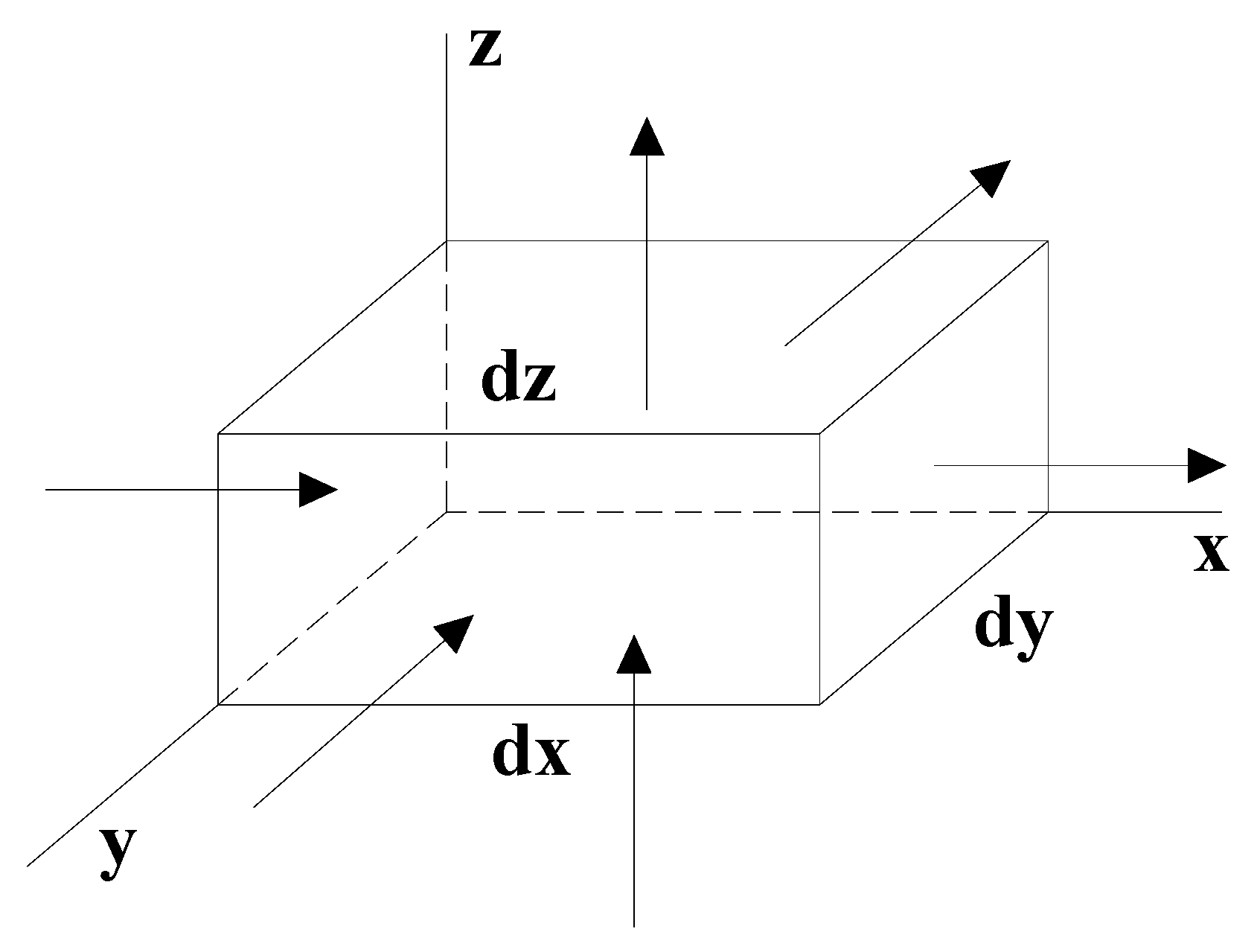


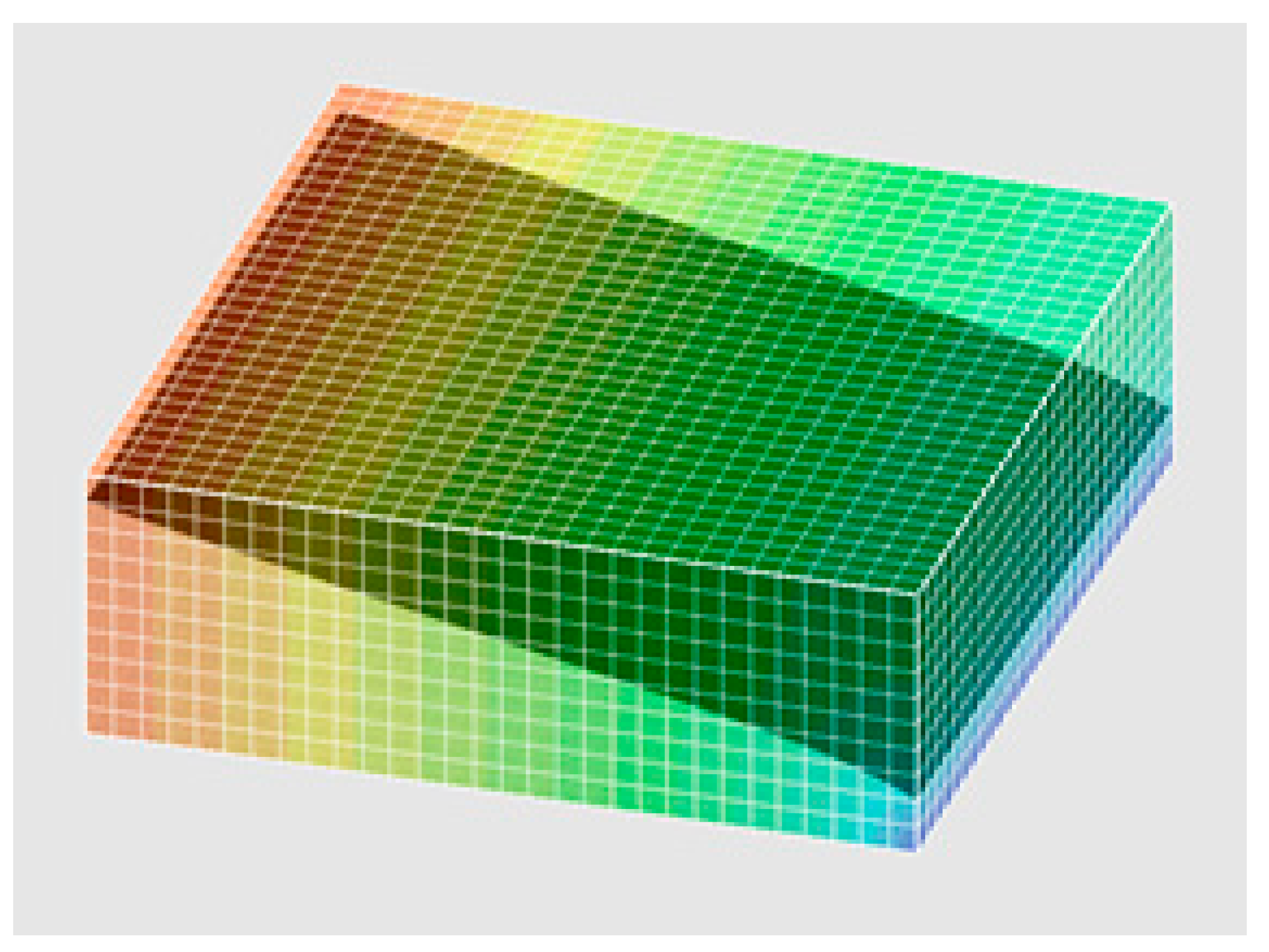
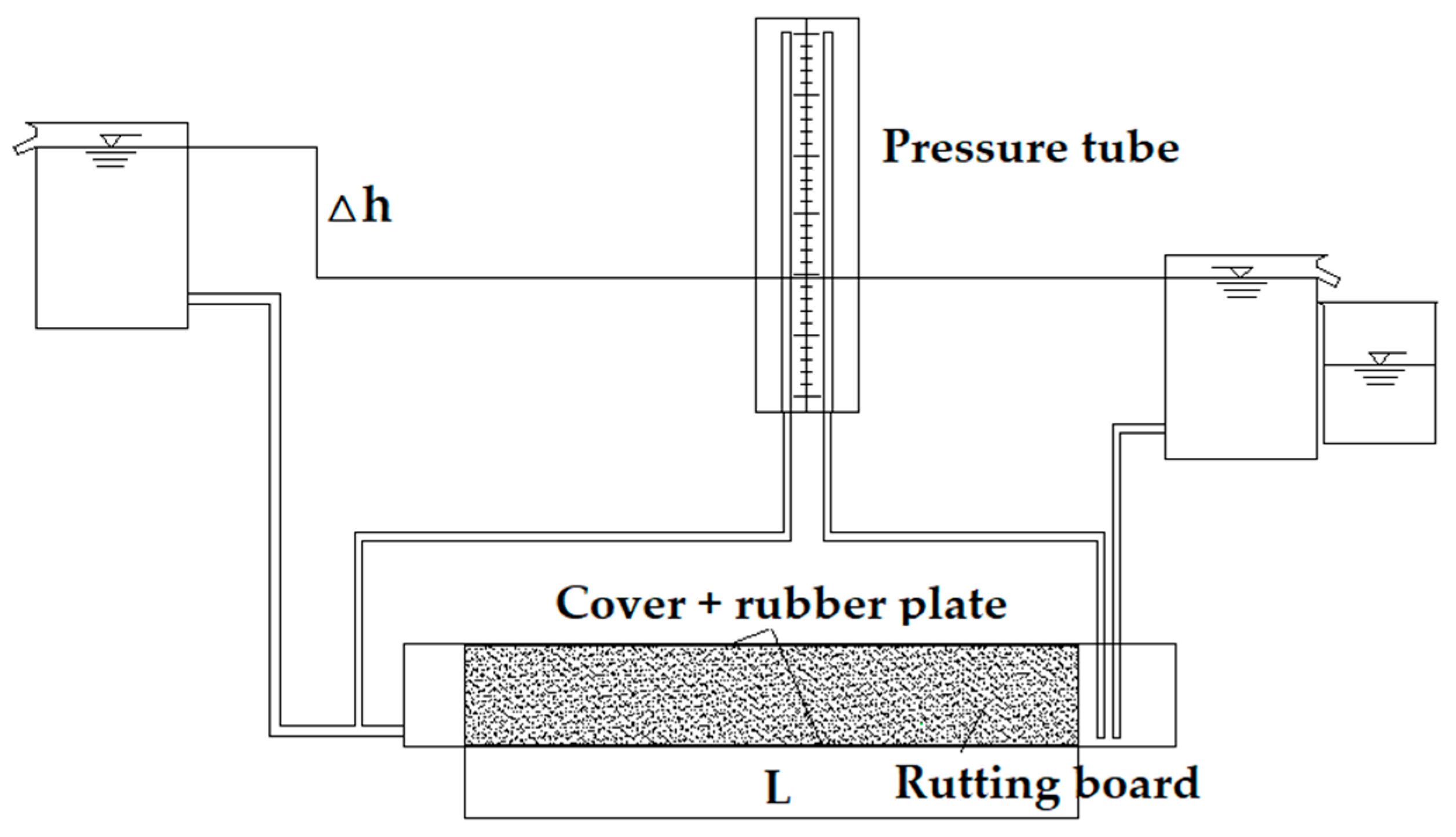
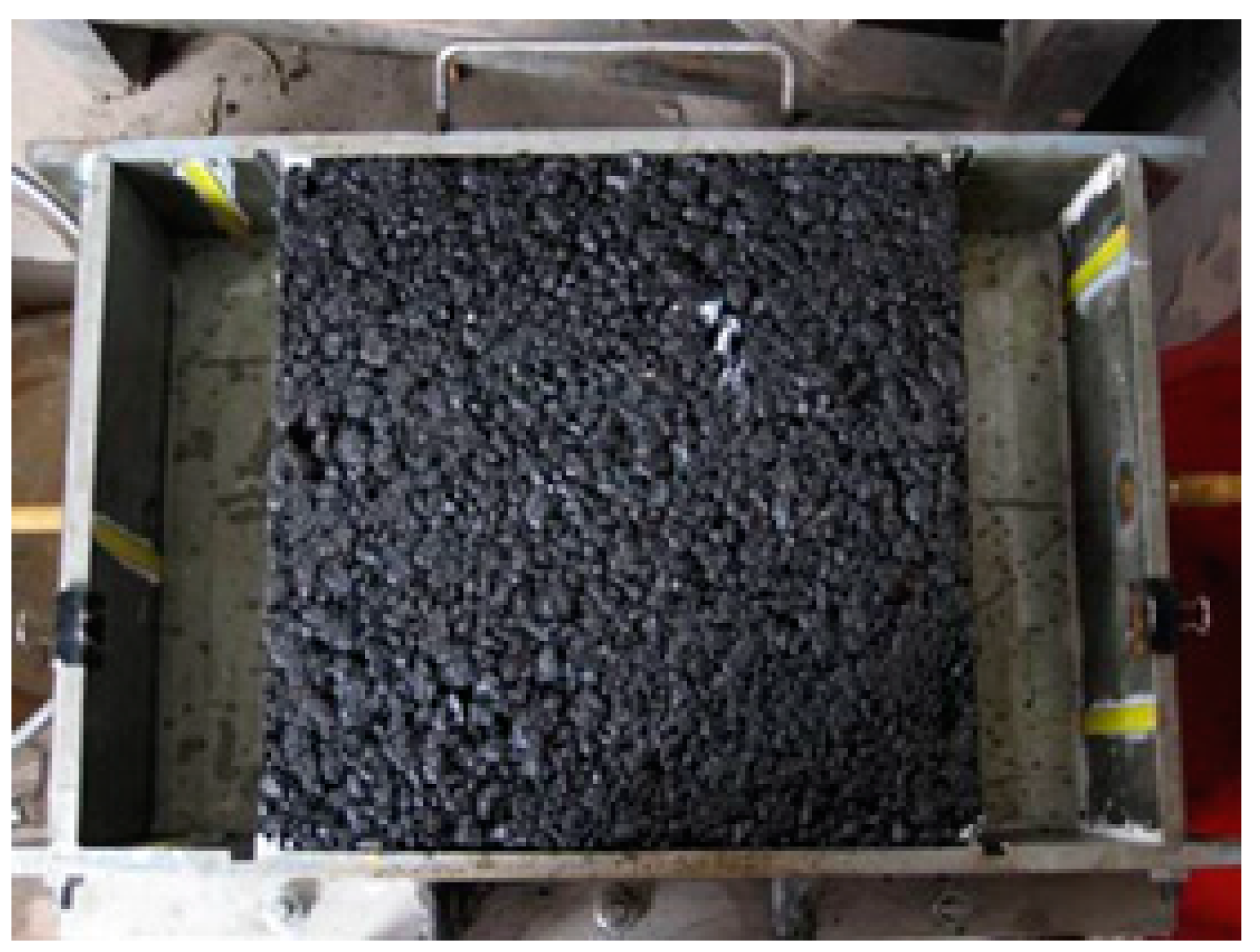
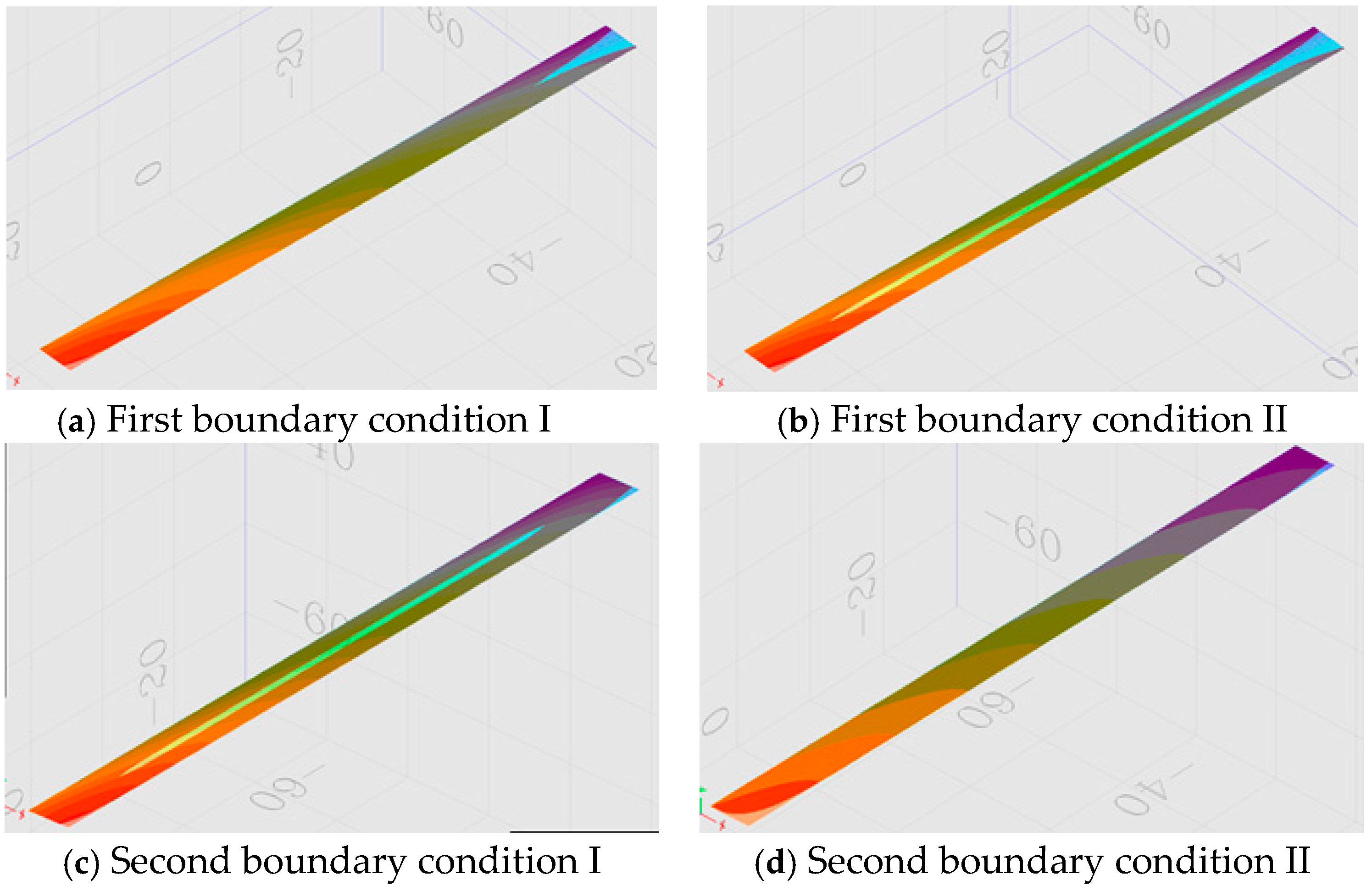
| Porosity (%) | Permeability Coefficient (cm/s) |
|---|---|
| 15 | 0.48 |
| 18 | 0.93 |
| 21 | 1.39 |
| 23 | 1.68 |
| Head of Infiltration Surface Height (cm) | Flow from the Infiltration Surface (m3/s) | |||
|---|---|---|---|---|
| 15% | 18% | 21% | 23% | |
| 5.0 | 1.52 | 2.95 | 4.40 | 5.32 |
| 6.0 | 1.87 | 3.62 | 5.42 | 6.55 |
| 7.0 | 2.22 | 4.30 | 6.43 | 7.77 |
| 8.0 | 2.59 | 5.02 | 7.50 | 9.07 |
| 9.0 | 2.98 | 5.77 | 8.63 | 1.04 |
| 10.0 | 3.37 | 6.53 | 9.76 | 1.18 |
| Infiltration Surface Height (cm) | The Height of the Head of the Infiltration Surface (cm) | |||
|---|---|---|---|---|
| 15% | 18% | 21% | 23% | |
| 5.0 | 1.45 | 1.45 | 1.45 | 1.45 |
| 6.0 | 1.55 | 1.55 | 1.55 | 1.55 |
| 7.0 | 1.65 | 1.65 | 1.65 | 1.65 |
| 8.0 | 1.75 | 1.75 | 1.75 | 1.75 |
| 9.0 | 1.85 | 1.85 | 1.85 | 1.85 |
| 10.0 | 1.95 | 1.95 | 1.95 | 1.95 |
| Head Height of Infiltration Surface (cm) | Flow from the Infiltration Surface (m3/s) | |||
|---|---|---|---|---|
| 15% | 18% | 21% | 23% | |
| 5.0 | 1.34 | 2.65 | 3.98 | 4.86 |
| 6.0 | 1.56 | 3.28 | 5.04 | 6.01 |
| 7.0 | 2.01 | 4.01 | 6.01 | 7.16 |
| 8.0 | 2.30 | 4.68 | 7.05 | 8.54 |
| 9.0 | 2.58 | 5.31 | 8.15 | 9.8 |
| 10.0 | 3.02 | 6.21 | 9.12 | 1.12 |
| Head Height of Infiltration Surface (cm) | Height of Water Head of Infiltration Surface (cm) | |||
|---|---|---|---|---|
| 15% | 18% | 21% | 23% | |
| 5.0 | 1.65 | 1.65 | 1.65 | 1.70 |
| 6.0 | 1.75 | 1.75 | 1.75 | 1.78 |
| 7.0 | 1.78 | 1.80 | 1.81 | 1.83 |
| 8.0 | 18.5 | 1.85 | 1.87 | 1.89 |
| 9.0 | 1.90 | 1.95 | 1.95 | 1.98 |
| 10.0 | 2.00 | 2.03 | 2.05 | 2.05 |
| Head Height of Infiltration Surface (cm) | Flow from the Infiltration Surface (10−5 m3/s) | |||||||
|---|---|---|---|---|---|---|---|---|
| 15% | 17% | 20% | 23% | |||||
| AV | TV | AV | TV | AV | TV | AV | TV | |
| 5.0 | 1.34 | 0.65 | 2.65 | 1.26 | 3.98 | 1.88 | 4.86 | 2.28 |
| 6.0 | 1.56 | 0.90 | 3.28 | 1.74 | 5.04 | 2.61 | 6.01 | 3.15 |
| 7.0 | 2.01 | 1.12 | 4.01 | 2.17 | 6.01 | 3.24 | 7.16 | 3.92 |
| 8.0 | 2.30 | 1.52 | 4.68 | 2.95 | 7.05 | 4.40 | 8.54 | 5.32 |
| 9.0 | 2.58 | 1.83 | 5.31 | 3.55 | 8.15 | 5.30 | 9.8 | 6.41 |
| 10.0 | 3.02 | 2.19 | 6.21 | 4.24 | 9.12 | 6.34 | 1.12 | 7.67 |
| Longitudinal Slope (%) | Pavement Critical Drainage Capacity (m/s) | ||||
|---|---|---|---|---|---|
| K1 = 0.3 cm/s | K2 = 0.6 cm/s | K3 = 0.9 cm/s | K4 = 1.2 cm/s | K5 = 1.5 cm/s | |
| 0 | 1.11 | 2.22 | 3.33 | 4.44 | 5.55 |
| 1 | 1.11 | 2.22 | 3.33 | 4.44 | 5.55 |
| 2 | 1.11 | 2.22 | 3.33 | 4.44 | 5.55 |
| 3 | 1.11 | 2.22 | 3.33 | 4.44 | 5.55 |
| 4 | 1.11 | 2.22 | 3.32 | 4.43 | 5.54 |
| 5 | 1.11 | 2.21 | 3.32 | 4.43 | 5.53 |
| 6 | 1.11 | 2.21 | 3.32 | 4.43 | 5.54 |
| Longitudinal Slope (%) | Pavement Critical Drainage Capacity (m/s) | ||||
|---|---|---|---|---|---|
| K1 = 0.3 cm/s | K2 = 0.6 cm/s | K3 = 0.9 cm/s | K4 = 1.2 cm/s | K5 = 1.5 cm/s | |
| 0 | 2.37 | 4.75 | 7.11 | 9.48 | 11.85 |
| 1 | 2.37 | 4.75 | 7.11 | 9.48 | 11.85 |
| 2 | 2.37 | 4.75 | 7.11 | 9.48 | 11.85 |
| 3 | 2.37 | 4.75 | 7.11 | 9.48 | 11.85 |
| 4 | 2.37 | 4.75 | 7.10 | 9.48 | 11.85 |
| 5 | 2.37 | 4.74 | 7.10 | 9.47 | 11.84 |
| 6 | 2.37 | 4.74 | 7.10 | 9.47 | 11.84 |
| Longitudinal Slope (%) | Pavement Critical Drainage Capacity (m/s) | ||||
|---|---|---|---|---|---|
| K1 = 0.3 cm/s | K2 = 0.6 cm/s | K3 = 0.9 cm/s | K4 = 1.2 cm/s | K5 = 1.5 cm/s | |
| 0 | 1.11 | 2.22 | 3.33 | 4.44 | 5.55 |
| 1 | 1.11 | 2.22 | 3.33 | 4.44 | 5.55 |
| 2 | 1.11 | 2.22 | 3.33 | 4.44 | 5.55 |
| 3 | 1.11 | 2.22 | 3.33 | 4.44 | 5.55 |
| 4 | 1.11 | 2.21 | 3.32 | 4.43 | 5.55 |
| 5 | 1.11 | 2.21 | 3.32 | 4.43 | 5.54 |
| 6 | 1.11 | 2.21 | 3.32 | 4.43 | 5.53 |
| Longitudinal Slope (%) | Pavement Critical Drainage Capacity (m/s) | ||||
|---|---|---|---|---|---|
| K1 = 0.3 cm/s | K2 = 0.6 cm/s | K3 = 0.9 cm/s | K4 = 1.2 cm/s | K5 = 1.5 cm/s | |
| 0 | 2.37 | 4.75 | 7.11 | 9.48 | 11.85 |
| 1 | 2.37 | 4.75 | 7.11 | 9.48 | 11.85 |
| 2 | 2.37 | 4.75 | 7.11 | 9.48 | 11.85 |
| 3 | 2.37 | 4.75 | 7.11 | 9.48 | 11.85 |
| 4 | 2.37 | 4.74 | 7.11 | 9.48 | 11.85 |
| 5 | 2.37 | 4.74 | 7.10 | 9.47 | 11.85 |
| 6 | 2.37 | 4.74 | 7.10 | 9.47 | 11.84 |
© 2020 by the authors. Licensee MDPI, Basel, Switzerland. This article is an open access article distributed under the terms and conditions of the Creative Commons Attribution (CC BY) license (http://creativecommons.org/licenses/by/4.0/).
Share and Cite
Zhang, Q.; Ji, T.; Wang, Z.; Xiao, L. Experimental Study and Calculation of a Three-Dimensional Finite Element Model of Infiltration in Drainage Asphalt Pavement. Materials 2020, 13, 3909. https://doi.org/10.3390/ma13183909
Zhang Q, Ji T, Wang Z, Xiao L. Experimental Study and Calculation of a Three-Dimensional Finite Element Model of Infiltration in Drainage Asphalt Pavement. Materials. 2020; 13(18):3909. https://doi.org/10.3390/ma13183909
Chicago/Turabian StyleZhang, Qingsong, Tianjian Ji, Zhanqi Wang, and Lei Xiao. 2020. "Experimental Study and Calculation of a Three-Dimensional Finite Element Model of Infiltration in Drainage Asphalt Pavement" Materials 13, no. 18: 3909. https://doi.org/10.3390/ma13183909
APA StyleZhang, Q., Ji, T., Wang, Z., & Xiao, L. (2020). Experimental Study and Calculation of a Three-Dimensional Finite Element Model of Infiltration in Drainage Asphalt Pavement. Materials, 13(18), 3909. https://doi.org/10.3390/ma13183909




